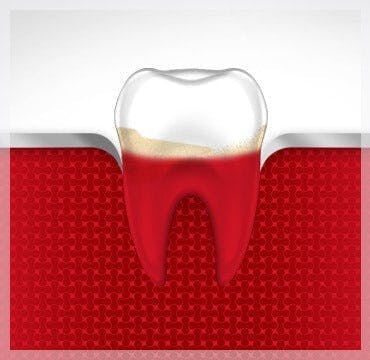Even if you’ve never heard the term “biofilm,” you’ve probably encountered multiple biofilms throughout your life.1 A biofilm is created when bacteria and microorganisms attach to a surface and create a film-like substance.1,2 For example, dental plaque is considered a biofilm.1 If you’ve ever walked on a bed of river rocks, the slippery coating covering them is also a biofilm. Biofilms can form on a variety of surfaces, including natural materials, metal, plastic, medical implant materials and plant and body tissue.1 Biofilm communities can consist of a single type of bacteria or a mixture of different varieties.1 While biofilms in nature are abundant, it’s beneficial to know about other types, like dental biofilms, and how to help control them with proper oral hygiene.
How Do Biofilms Form?
A biofilm starts to form when free floating bacteria attach to a surface.1 After attaching, the bacteria begin to excrete a slimy, glue-like substance and colonize the surface.1 Next, they start to propagate, or create more bacteria, and release the individual bacteria to leave and attach to a different surface or biofilm nearby.1
Oral Biofilms
Oral biofilms can exist on the tooth surface, gum pockets and tongue.3,4 When bacteria in your mouth increases and multiplies, it creates a network of layers and channels that form the basis for a biofilm.3 There are generally around 700 different types of bacteria living in your mouth, with most of them being harmless. However, some of the bacteria can be pathogenic, or disease-causing.3
How an Oral Biofilm Can Affect Your Health
Biofilms on the tooth surface and gum pockets can cause issues like gum disease if not managed properly.3 When an oral biofilm is formed on or around the gums, your body sends white blood cells to the site to destroy the bacteria.3 Unfortunately, the bacteria can defend against the white blood cells and make their immune response less effective.3 If the white blood cells fail to kill the bacteria in three days, they can die, resulting in additional gum inflammation and even leading to tooth bone loss and deeper gum pockets.3
Biofilm Control with Oral Hygiene
If you’re worried about your oral biofilm, don’t be! There are ways to control the biofilm with dental hygiene.5 When it comes to improving biofilm control, studies show that mouthwash, when combined with mechanical removal like brushing twice daily and flossing, can help inhibit the biofilm’s growth and ability to affect your gums.5 Controlling your biofilm is important, as studies show that individuals with gum disease have a higher risk of developing cardiovascular issues and other systemic issues than those who take preventative measures against the biofilm on their mouth, teeth and tongue.3
Typically, the biofilm can be removed with regular brushing and flossing. However, research has shown that removing the biofilm with brushing and flossing may not be enough to prevent gum disease on its own due to inadequate skills, motivation, tools or compliance. In addition, cleaning hard-to-reach areas and along the gumline can be challenging, especially for older adults, individuals with physical or mental disabilities or people with crooked or crowded teeth or dental appliances.5 As a result, different antibacterial and microbial agents have been incorporated into mouthwashes to supplement the benefits of regular brushing and flossing or interdental cleaning. While more research is needed, studies have shown that antimicrobial mouthwashes can help inhibit biofilm growth and help reduce gum inflammation.5
Choosing an Antibacterial Mouthwash
If you’re looking for a daily anti-gingivitis and anti-plaque mouthwash to add to your oral health routine, try Active Gum Health Breath Freshener Mouthwash. This mouthwash killes 99.9% of plaque bacteria.* It’s alcohol-free, targets bacteria* and forms a bacteria shield after use.
*In laboratory tests
SOURCES
- Biofilm basics: Section 1. Center for Biofilm Engineering. Montana State University. https://biofilm.montana.edu/biofilm-basics/what_are_biofilms.html. Accessed 8/22/24.
- Biofilms: Microbial Life on Surfaces. Emerging Infectious Diseases. PMC. https://www.ncbi.nlm.nih.gov/pmc/articles/PMC2732559/. Accessed 8/22/24.
- The systemic oral health connection: Biofilms. Medicine Journal. PMC. https://www.ncbi.nlm.nih.gov/pmc/articles/PMC9678577/. Accessed 8/22/24.
- The tongue biofilm metatranscriptome identifies metabolic pathways associated with the presence or absence of halitosis. npj Biofilms and Microbiomes. https://www.nature.com/articles/s41522-022-00364-2. Accessed 8/22/24.
- Evidence on the Use of Mouthwash for the Control of Supragingival Biofilm and Its Potential Adverse Effects. Antibiotics Journal. PMC. https://www.ncbi.nlm.nih.gov/pmc/articles/PMC9219991/. Accessed 8/22/24.





